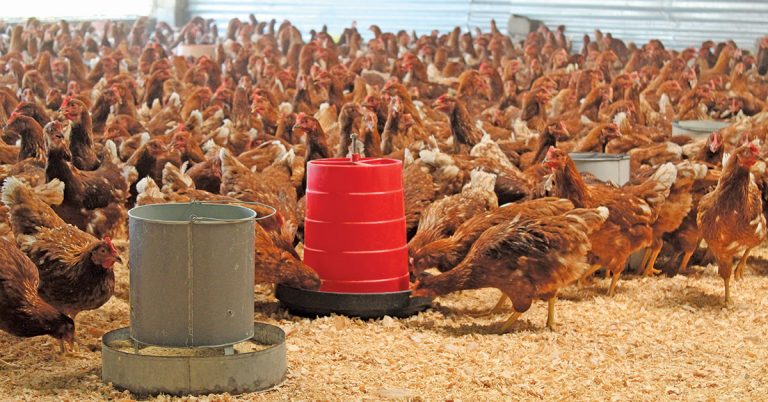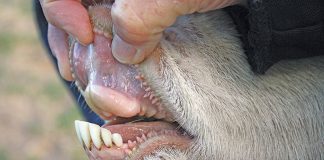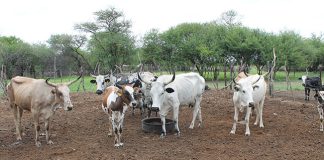
Photo: Lindi Botha
Poultry farmer Ben-Chris Bronkhorst of Hazyview, Mpumalanga, is quick to point out that he is paranoid about the health of his chickens.
“I keep an eye on them and always look out for a problem. If I don’t consciously do so, I can miss something and easily lose 100 chickens overnight to an illness.
“I instruct my staff to do the same. Are the birds sneezing, lying down too much, shaking their heads, or just generally too inactive? These are the first signs that something is amiss and I need to remedy the situation.”
While Bronkhorst has been farming for only three years, the energy and passion with which he has taken over the family poultry business, Eliza Chicks, has ensured a well-run operation with minimal incidence of disease outbreaks in the flock.
Eliza Chicks produces 4 000 broilers a week. Day- old chicks are sourced in Ermelo, Mpumalanga, and Pretoria, Gauteng, and sold at six weeks, mostly to the informal market.
Diseases
Bronkhorst notes that while avian influenza is the most economically devastating disease for a poultry farm, it is rare, and he managed to keep it at bay during the big outbreak in 2017.
“But you have to have all the protocols in place to ensure that if an outbreak does occur, it doesn’t reach your farm. And having the correct procedures in place helps to ensure that other diseases don’t develop on the farm either.”
He highlights coccidiosis and the common cold as the most prevalent issues to watch out for.
“Coccidiosis is a bacterium that’s already present in the chicken’s guts, but it can become a problem if it increases rapidly. Any stress placed on the chickens will cause the bacteria to multiply. This includes low temperatures, lack of water for too long, or too much handling.”
According to Bronkhorst, chickens can develop a cold due to poor air quality or low temperatures, and telltale signs are sneezing or coughing.
Diarrhoea can also be a problem, but is not usually serious. It can be caused by a high intake of water.
Bronkhorst pays close attention to the colour of the birds’ faeces, as this can provide clues about their general health.
“A maroon colour indicates blood in the faeces, which is most likely caused by coccidiosis. If the faeces is white, it could be a sign of a cold, as the [mucus] would cause the whiteness.”
In sum, a combination of the correct living conditions and good biosecurity will help keep diseases at bay, external parasites off the farm, and the flock in good condition.
Preparation
Preparing the chicken houses for the arrival of new chicks is crucial to maintaining their good health. For Bronkhorst, this means that everything from the drinkers and feed bowls to the walls and floors have to be cleaned properly and sanitised.
He uses a combination of Virokill (a formalin-based product) and chlorine to ensure thorough cleaning.
“Virokill is made for use in chicken houses, so it’s safe. Formalin is very strong, and you need to wear protective clothing while applying it. The chlorine kills bacteria and also eliminates bad smells. The combination works very well.”
Before a new cycle of chickens is placed in the houses, the entire area, including the canvas sides, is cleaned thoroughly. Old litter and wood shavings are removed, and the area is hosed down with a Virokill-chlorine mixture applied with a pressure washer.
“This also gets rid of any preen oil from the chickens that lands up on the surfaces,” explains Bronkhorst.
“I then go over the area again with formalin, and leave the area untouched for three weeks. This is long enough to kill off any trace of bacteria, because there’s nothing left for them to live off.
“Everything that’s removable, such as the drinkers and feeders, is dried in the sun so that the heat can further sterilise the equipment. Then it’s also left to rest for three weeks.”
Litter management
It’s crucial to remove every trace of manure and used litter from the chicken houses as well as the farm, explains Bronkhorst, as they attract flies and wild birds.
“If the wild birds get too close to the houses they can end up inside them, which means there’s a risk that any diseases they carry could be transferred to the flock. This is of particular concern because Eliza Chicks isn’t the only chicken farm in the area. The wild birds can transfer diseases from one farm to another.”
He adds that the strong ammonia smell of the manure in the litter can also cause respiratory problems in the chickens, leading to colds.
A number of crop farmers in the area collect litter and manure from Eliza Chicks for use as fertiliser. And as Bronkhorst is keen to have it removed as quickly as possible, he gives it to these farmers for free.
He also ensures that the litter stays dry, as wet litter is cold and the chickens can get sick as a result.
“Some farmers rake up the wood shavings and spread them out again so that they dry out and become aerated, but I prefer to replace them completely. If I walk into the houses and there’s a bad smell, I replace the litter. In the rainy season this is done every second week.
“Wet shavings create ideal conditions for bacteria to flourish in. This is the perfect environment for diseases to develop and spread. Also, if it’s wet, the chickens get cold and start piling up on top of each other to stay warm.
“It does cost me more to replace the shavings so frequently, but chickens that live in a clean and healthy environment simply grow better.”
Bronkhorst prefers wood shavings over sawdust, as the latter is very fine; if kicked up or disturbed, it creates dust, which is detrimental to the birds’ health. The shavings come from a nearby sawmill and are sterilised before use.
The biosecurity of feed storage facilities should also be well thought out, he explains, as they, too, can be a source of disease.
“The feed attracts rats and wild birds, so it should be properly sealed or in an area where they can’t access the feed. It’s best to have a rat-control system, and I put bird seed in a designated area to draw the wild birds away from the chickens.”
A new flock
Bronkhorst uses his own trucks to collect the day-old chicks, which gives him more control over biosecurity; he cleans and disinfects the vehicles and cages with the same products used on the poultry houses.
“The chick suppliers fumigate the trucks when they arrive to collect the chicks to ensure there are no pathogens or bacteria present. They also have very strict biosecurity protocols in place, so I know I’m getting healthy chicks from the start. The onus is then on me to ensure they stay that way throughout their life cycle.”
The chicks receive a stress-relieving formula in their drinking water when they arrive at Eliza Chicks to calm them down after being moved from one farm to the other.
Bronkhorst emphasises the importance of adequate spacing in maintaining flock health.
“You can have the healthiest chicks, but if they’re cramped in their houses, they’re prone to stress, which makes them susceptible to infection. I work on eight to 10 chickens/m² [in summer], but I can increase this to 12 chickens/m² in winter.”
As the chicks grow, Bronkhorst and his team gradually raise the drinkers and feeders off the ground to a height that can be accessed by the smallest chicken in the flock. This prevents the birds from stepping into the containers and soiling the feed and water, which would also contribute to disease that would infect the entire flock.
The staff walk on footpaths at the entrances of all the houses to ensure that bacteria don’t
spread from one area to the next. Customers who come to collect chickens have their vehicles disinfected, and also have to use the footbaths.
Bronkhorst says that achieving total coverage with disinfectants is his biggest challenge in terms of biosecurity.
“Absolutely everything has to be cleaned properly. This means ensuring that the products are mixed correctly, and managing the staff who apply the products. There’s always a concern that it hasn’t been done adequately and that harmful bacteria will slip in.”
Bronkhorst’s degree in labour relations has come in handy, as he spends much of his time training his staff on biosecurity measures and his management of the health of the chickens.
“My staff play an enormous role in successful biosecurity. They not only carry out the applications, but remain amongst the chickens all day to keep an eye open for any problems.”
Email Ben-Chris Bronkhorst at [email protected].










